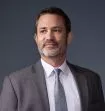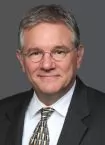Originally published November 17, 2011
Keywords: Transatlantic Economic Council, TEC, De Gucht, Froman, EU-US Summit
On November 29, 2011 the Transatlantic Economic Council (TEC) will meet for the sixth time for the purpose of moving forward the political and economic transatlantic dialogue between the European Union and the United States. The meeting will take place in Washington DC and will be chaired by Karel De Gucht, European Commissioner for Trade, and Michael Froman, Deputy Assistant to the US President and Deputy National Security Adviser for international economic affairs.
The TEC meeting will follow the annual EU-US Summit to be held on November 28th, 2011 in Washington as well. The EU-US Summit will be chaired by European Commission President José Manuel Barroso, European Council President Herman van Rompuy and US President Barack Obama and it will be devoted to discussing, among other matters, global economic issues, bilateral relations and opportunities to promote growth and jobs.
Key Issues
A draft agenda for the TEC meeting on November 29, 2011 has already been circulated. The first part of the meeting will be devoted to taking stock on the achievements made so far within the TEC. This includes discussing the next steps in the work streams of these key areas. The second part of the meeting will be dedicated to identifying new issues going forward and the role the TEC could play in these new areas of cooperation.
ELECTRIC VEHICLES
E-mobility and, in particular, electric vehicles, constitutes one of TEC's major successes. It is an area where the cooperation between regulators, standardisation bodies and business has been very fruitful and the definition of a joint roadmap has led to the development of compatible standards for electric cars and smart grids on both sides of the Atlantic. Moreover, once agreed to and implemented, the same standards could then be promoted in international fora to be also used in third countries (such as China and India).
The TEC will now review the progress achieved regarding the standards for electric vehicles and the status of pilot projects. Following this, the TEC will try to find a coherent approach to standards for vehicle connectors linking them with the grid.
Main achievements in this area include:
- Agreement reached on the roadmap on regulatory issues, standardization and research programmes;
- Agreement reached by seven transatlantic car manufacturers (Audi, BMW, Daimler, Ford, General Motors, Porsche and Volkswagen) to support a harmonised single-port fast-charging approach in October 2011;-
- US Department of Energy and EU's Joint Research Centre closely working on a proposal for the development of test facilities on e-mobility, likely to be approved in 2012; and
- A conference on e-vehicles during the World Standards Week, held in Washington in October 2011, which brought together the three main stakeholders: EU and US high-level government officials, car manufacturers and standardisation bodies from the United States (American National Standards Institute) and Europe (CEN, CENELEC and ETSI).
INVESTMENT
The European Union and the United States are each other's primary source and destination for investment, with mutual investment stocks of more than €2.1 trillion. Therefore, a transatlantic approach on investment policy is considered to be a key element by business, particularly in view of the protectionist direction taken in some emerging economies.
In this respect, the establishment of a High Level Group on Investments has been applauded. However, significant work still needs to be undertaken in order to have the European Union and the United States define principles for responsible and transparent investment policies and procedures. The TEC needs to set up a strong regulatory framework for inward and outward investment that can be applied on a global basis, hence also vis-à-vis emerging economies.
With the changes introduced by the Lisbon Treaty, foreign direct investment is now part of the common commercial policy (Art 206 Treaty on the Functioning of the European Union) and for the first time provides the legal basis to the EU to negotiate investment agreements. In September 2011 the Council of the EU approved mandates for negotiating investment protection chapters in Free Trade Agreements with Canada, India and Singapore. Therefore, the legal basis is now there to pave the way to an EU-US investment agreement.
SECURE TRADE
Progress has been made on 100 percent scanning and mutual recognition, with an EU-US agreement on mutual recognition of trusted trade programmes to be finalised shortly. This agreement is the achievement of the EU-US Joint Customs Cooperation Committee, which had developed a roadmap towards mutual recognition back in 2008. Once implemented, the agreement will provide for mutual recognition of security trade partnership programmes (the US Customs-Trade Partnership against Terrorism and the EU Authorised Economic Operator). This should reduce the administrative burdens of companies and improve security at ports.
REGULATORY COOPERATION
The TEC will review the work undertaken under the High Level Regulatory Cooperation Forum (HLRCF). In this area, significant progress has been achieved by agreeing on a number of key joint principles on trade in Information and Communication Technology services and impact assessments but, again, more work aimed at regulatory convergence is desired by the business community.
A new agreement on energy efficiency of office equipment (relating to the "Energy Star" label) will also be dealt with in the November meeting.
RAW MATERIALS
The November TEC will also cover raw materials, with a view toward developing joint strategies and best practices in this area. This is in order to ensure access to critical raw materials, such as those required for the development of the low-carbon economy, and to address harmful practices such as export restrictions. The new approach is based on a holistic mix of policy measures with focus not only on trade but also on other areas:
- Trade policy responses—concrete actions on countries negatively affecting trade flows of key materials;
- Increased R&D;
- Promotion of substitution and recycling; and
- Comprehensive waste shipment regulations.
OTHER ISSUES
There are a number of areas where the TEC may want to explore a possible future role:
- Cloud computing: this is an area where both the European Union and the United States are starting to take some regulatory action. Therefore, it would make sense to adopt a transatlantic approach. In the United States, the Cloud Computing Commission released a report in July with a set of recommendations for the US government agencies on how to develop the appropriate rules for cloud services. By the same token, in the European Union, Commissioner Neelie Kroes has committed to come up with a strategy on cloud computing by the end of 2012 in line with the Digital Agenda. To this end, she created a high-level group with industry representatives that should issue a report by the end of November 2011.
- Nanotechnology: EU and US businesses have, for some time, voiced their interest in developing a transatlantic approach in this area. According to officials from both sides, the next TEC will include a discussion of common regulatory procedures in new areas, along with the role the TEC could play, and nanotechnology is also one of these.
- E-Health: some business associations have requested the TEC to take concrete action in order to develop privacy-protected, interoperable electronic health records. According to these business associations, this would improve patient safety by progressively substituting handwritten paper-based health records.
Outlook
The current Eurozone crisis has shown the strong interdependence of the EU and US economies.
Hence, more than ever, there is an urgent need for a closer economic cooperation to boost growth and create jobs.
In this context, the TEC will not provide an immediate remedy to the current economic problems but it can play a vital role in expanding the economic benefits of the transatlantic economy. Moreover, as the prime EU-US forum, it can at least provide the strategic and political impulse to promote further integration, at a time where growth and jobs will also be at the heart of the EU-US Summit. Obviously, the question remains whether there is a desire to go further and explore ways to pursue trade liberalisation by way of a bilateral agreement between the European Union and the United States.
Background
ECONOMIC BACKGROUND
With mutual investment stocks reaching more than €2.1 trillion, and trade in goods and services worth €700 billion annually, the European Union and the United States enjoy the strongest economic relationship between any two economies in the world. In fact, the EU and the US economies account together for about half the entire world economy and, therefore, represent the largest transatlantic market. They have the largest bilateral trade and investment relationship in the world, with roughly 31 percent of the world trade and more than 53 percent of the world GDP.
THE TEC
The TEC was established under the auspices of the 2007 EU-US Summit with the aim of advancing the economic integration between the European Union and the United States.
On April 30, 2007, European Commission President José Manuel Barroso, German Chancellor Angela Merkel and then-US President George W. Bush signed the "Framework for Advancing Transatlantic Economic Integration between the United States of America and the European Union." A key element of this framework was the adoption of a work programme of cooperation across a host of sectors: justice and home affairs, energy and energy security, environment, science & technology, education & training. But the cornerstone of this framework was the establishment of a political platform to take forward these cooperation efforts and boost the transatlantic economy: the TEC.
The TEC brings together those Members of the European Commission and the US Cabinet who carry the political responsibility for the different policy areas that are covered by the Framework and were discussed during the meetings. In addition, the TEC convenes a Group of Advisers, consisting of the co-chairs of the three existing transatlantic dialogues: the Transatlantic Legislators' Dialogue, the Transatlantic Consumer Dialogue and the Transatlantic Business Dialogue. The Group of Advisers is mandated to reach out to the broader stakeholder community and to give a voice to their concerns.
Since 2005, the European Commission and the US government have also held regular meetings of the HLRCF to facilitate the exchange of best regulatory practices across industry sectors. The HLRCF will meet in advance of the TEC, that is, on November 28, 2011.
Since 2009, there has also been an EU-US Energy Council devoted to deepening the transatlantic dialogue on strategic energy issues, such as security of supply or policies to move towards low carbon energy sources while strengthening the ongoing scientific collaboration on energy technologies. This Council was launched by European Commissioners Andris Piebalgs (Energy), Benita Ferrero-Waldner (External Relations) and Janez Potočnik (Research), together with the US Secretary for Energy Steven Chu and US Deputy Secretary of State James Steinberg, on November 4, 2009 in Washington. The meeting of the Energy Council will also precede the TEC and hold its meeting on November 28, 2011.
Learn more about our Global Trade practice.
Visit us at mayerbrown.com
Mayer Brown is a global legal services organization comprising legal practices that are separate entities (the Mayer Brown Practices). The Mayer Brown Practices are: Mayer Brown LLP, a limited liability partnership established in the United States; Mayer Brown International LLP, a limited liability partnership incorporated in England and Wales; Mayer Brown JSM, a Hong Kong partnership, and its associated entities in Asia; and Tauil & Chequer Advogados, a Brazilian law partnership with which Mayer Brown is associated. "Mayer Brown" and the Mayer Brown logo are the trademarks of the Mayer Brown Practices in their respective jurisdictions.
© Copyright 2011. The Mayer Brown Practices. All rights reserved.
This Mayer Brown article provides information and comments on legal issues and developments of interest. The foregoing is not a comprehensive treatment of the subject matter covered and is not intended to provide legal advice. Readers should seek specific legal advice before taking any action with respect to the matters discussed herein.


